













Tackling teen mental health issues Finding reproductive care post-Roe Timely topics: Foot care, coffee and sleep Health 2022-23& Wellness FREE Getting the most from telehealth Methow Valley
6Tackling teen mental health issues.


14Finding reproductive care post-Roe.
for abortion
state remain strong.
Health & Wellness
timely topics: Foot care, coffee and sleep.
Editor’s Note



Keeping current
Each year when we talk about what to feature in the annual Health & Wellness magazine, we try to focus on subjects that are topical and responses that are practical. For the past couple of years, that meant paying attention to COVID-related challenges. While we are not entirely past the pandemic, in Health & Wellness 2022-23 we turn our attention to some issues that are front-and-center for many of us.
Online care is a growing phenomenon, partly in response to COVID and partly as a necessary streamlining of the health care system. On page 3, you’ll find an informative article that covers what to know about and how to take advantage of what’s now known as telehealth.
Teen mental health challenges are generating heightened alarm among parents, school officials and health care professionals. Read about what’s behind the issue and what’s being done about it,
starting on page 6. The article is co-authored by the mother-daughter team of Ashley Lodato and Leki Lodato Albright, who is a junior at Liberty Bell High School.
The U.S. Supreme Court’s decision that essentially overturned Roe v. Wade created widespread uncertainty about the future of reproductive care in this country. For a look at local implications and responses, see the article beginning on page 14.
You’ll also find some brief articles offering other timely health care information on page 18.

Please also take note of our advertisers, whose support is essential to our work. They offer a wide range of essential services that are locally available, all related to some aspect of health care. The directory on page 19 is a valuable year-round resource that we hope you will take advantage of.

Don Nelson, publisher and editor
Methow Valley Health



&Wellness
Lodato


Marcy

Methow Valley News2 Counseelliing Crisiis resppoonse e Addiccttioon n & recoveerry Adultts, , y youth, elddeers, , f faammilliees s Okanogan Behavioral HealthCare www.okbhc.org Toll free (866) 826 6191 Medicaid Insurance Private pay Telehealth services by phone or video Photo courtesy of Chang Duong on Unsplash Inside 3 Getting the most from telehealth. Help for online appointments.
Local professionals, schools take aim at growing problem.
Protections
in
18
Don Nelson, publisher/editor Tera Evans, advertising Joe Novotny, design CONTRIBUTORS Ashley
Stamper Sandra Strieby Leki Lodato Albright A publication of the Methow Valley News P.O. Box 97, Twisp, WA 98856 509.997.7011 • 509.997.3277 fax editor@methowvalleynews.com www.methowvalleynews.com Find us on Facebook On the cover A walk in the woods near Mazama. Photo by Steve Mitchell Tackling teen mental health issues Finding reproductive care post-Roe Timely topics: Foot care, coffee and sleep Health 2022-23& Wellness FREE Getting the most from telehealth Methow Valley L
Health care online
Getting the most from telehealth
BY SANDRA STRIEBY
Like so many things, health care went virtual in the early days of the COVID-19 pandemic. Online appointments have pros and cons, but overall they’ve proven popular, and are likely to outlast the health emergency.
Visits by phone or computer may be referred to as telemedicine; tele health; or remote, video, or online
care. Telemedicine and telehealth are two of the most common terms. According to the National Institutes of Health, “Telemedicine refers specifically to online doctor visits, while telehealth also includes health-related education services like diabetes management or nu trition courses and health-related training.” This article will use the term “telehealth,” reflecting the varied types of care available in the Methow Valley.
Popular and practical
Telehealth is readily available in the Methow — it’s offered by
How to schedule a telehealth appointment

• Confluence Health: through the MyChart system or by call ing (509) 663-8711.
• Family Health Centers: through the call center at 1-800660-2129 or with a receptionist.
• Okanogan Behavioral HealthCare: call 1-866-826-6191 or use TTY relay at (509) 826-2113.
• Washington Department of Health (for COVID-19 consul tations): visit https://doh.wa.gov/emergencies/covid-19/ treatments/free-telehealth or call 1–800–525–0127 and press #.
Health & Wellness 2022-2023 3
© ADOBE STOCK
Online help available to get started
Confluence Health, Family Health Centers (FHC), and Okanogan Behavioral Healthcare (OBHC) as well as several private practitioners. Naturopathic care, counseling and movement education are all available online from local providers.

Telehealth use skyrocketed at the start of the pandemic. In most areas of care, use has since leveled off, although it remains much higher than it was pre-COVID. Melodie White, chief operations officer at FHC, reports that “Before the pandemic, we did not use telehealth as a regular visit type.” At the start of the
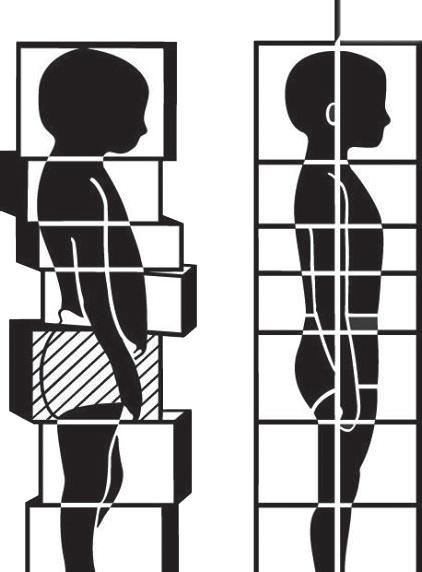
pandemic, she said, “We went to all telehealth visits for several weeks, and then continued doing telehealth once we opened up to in-person visits.” White said that about 15% of FHC visits are now via telehealth.
Dr. Becket Mahnke, chief medical information officer at Confluence Health, said that virtual visits jumped from “essentially zero before the pandemic” to well over 20,000 in April 2020. Mahnke now estimates that about 5-10% of Confluence visits are virtual, not including behavioral health. Confluence recently expanded telehealth
provider hours to meet demand from patients in the Methow Valley.
In the area of behavioral health, telehealth use has continued to grow. Confluence Health saw an increase from under 1% of visits in 2019 to 73% in 2020 and 81% in 2021. OBHC was using telehealth before the pandemic, and has seen remote visits grow more than four-fold since 2019, according to Carolbelle Branch, OBHC director of communications.
Works for many
Telehealth is a good choice for many, but not all, non-emergency visits. Tracy Corgiat, vice president of primary care at Confluence Health, said that “for the right health concern, telehealth can be an incredibly effective way for patients to seek care. Telehealth is great for behavioral health visits, nutrition and diabetes counseling, medication follow-ups, and new health conditions that don’t require hands-on physical examination, to name a few.”
There are also circumstances in which it doesn’t work as well.
“Some patients are stressed out
by technology and only want to see a provider in the clinic,” said FHC’s White. “Some symptoms are hard to assess without a provider listening to a patient’s lungs, or moving a limb to see what triggers pain, for example.” Branch noted that telehealth “can be less effective with our youngest clients” whose attention spans don’t yet accommodate long sessions of screen time. When it’s the right fit, telehealth has many advantages. OBHC’s Branch said that “Telehealth is very useful in an area like Okanogan County where residents are widely spread across remote areas and may be unable to access in-person services. That could be due to remote location, transportation limitations, child care availability, when providers are outside the area, or other situations.”
FHC’s White agreed that being able to receive care without traveling is a benefit, noting that telehealth “requires less time [away] from work [and is a] great option for people who don’t want to drive in the snow.” And, she said, it “limits exposure to infection.”
In addition, telehealth lets patients and care providers




Methow Valley News4
see each Tom Robinson, PhD, LMT Certified Rolfer™ Sore shoulders? Tight hamstrings? Restore ease & flex to your body. North Glover Healing Center 214 Glover St N, Twisp Massage Therapy license #MA60504379 509.998.2214 cascaderolfing.com/book
Confluence Health uses MyChart for online telehealth. Here is the opening part of the procedure. For the full PDF, visit www.confluencehealth.org/documents/content/ MyChart-Video-Visits-for-Patients.pdf FHC uses Athena Telehealth for online telelhealth. Here is the opening part of its procedure. For the full PDF, visit https://myfamilyhealth.org/wp-content/uploads/ 2020/10/Athena-Telehealth.pdf
other unmasked. That

productive, especially in behavioral health sessions,
subtle visual cues
Being prepared
Telehealth visits may be by phone or through a computer, tablet, smartphone, or other device that allows a video as well as audio connection. As noted above, a visual connection can be an important part of a health care session — so much so that, according to Branch, “OBHC is currently developing rooms set up specifically for telehealth sessions” to ensure the best-quality connection.
There are also times when a phone-only session may be ideal — for instance, when a patient simply needs to renew a prescription.
Regardless of the means of connection, telehealth sessions are private and confidential — providers use secure connections and adhere to privacy and security standards as they would with in-person appointments. Sessions with Spanish-speaking providers are available, as are interpretive services for other languages.
In some ways, preparing for a telehealth visit is similar to preparing to see a provider in person. Branch suggests that people “Think about their concerns and questions in advance … they may want to make notes of those to be shared with the provider.”
In addition, she recommends being prepared to let the provider know about any medications you’re taking. You may want to have the meds on hand so you can show them to the provider.
The technical elements of the visit will also require some planning.
Confluence, FHC and OBHC all emphasized the importance of having a good phone or internet connection, and testing the connection in advance. According to Dr. Mahnke, Confluence’s telehealth platform “allows patients to do a ‘technology check’ before their visit to ensure all is working properly for the optimal experience.”
Confluence also offers a video visit tip sheet at www.confluencehealth.org/documents/content/MyChart-Video-Visits-for-Patients.pdf.
FHC has telehealth instructions at https://myfamilyhealth.org/wp-content/uploads/2020/10/Athena-Telehealth.pdf, and White said that “We can do a test session with one of our staff to make sure the patient knows how to use the app … and connect to the telehealth visits.”

Branch suggested that clients find “a quiet, comfortable and private place where they can talk uninterrupted, and where they can feel safe about an honest and open interaction with the provider.”

For video visits, good lighting is important. Branch recommended “a well-lit area where there is good lighting on their face so the provider can see and get to know them. Turn off or avoid any lighting from behind, which creates a silhouette with the face in darkness.”
If you’re using a device other than a phone, be sure it has a microphone and speakers, said White.
Finally, said Branch, “Let the provider know what about telehealth worked well and what did not, so [client and provider] can work together to come up with solutions and make sure their sessions are productive.”
If you don’t have a good connection or the needed equipment, Room One has a private room with Zoom capability and a phone that can be reserved at no cost by calling (509) 997-2050.
Is it covered?
Telehealth coverage varies among insurance providers and specific insurance plans, so it’s a good idea to check with your insurer to find out about coverage and costs. Medicare coverage for telehealth expanded during the pandemic, and in July



the U.S. House of Representatives passed legislation that would extend the expanded coverage until 2024.
The bill has been sent to the Senate Finance Committee for consideration. As with other coverage, checking with insurance providers is the best way for Medicare recipients to know what’s covered.
An exception to the above is telehealth consultations for COVID-19, which are “available to everyone, regardless of insurance status, with no out-of-pocket costs,” according to the Washington State Department of Health.
Our Family Caring For Yours.
Family Medicine at Mid-Valley Clinic.

Health & Wellness 2022-2023 5 Jules Sleiman, M.D. Family Medicine Christine Jaquish, M.D. Family Medicine Delores Dolgner, ARNP Family Medicine Felix A. Alvelo, PA-C Family Medicine 529 Jasmine Street Omak, Washington 98841
Se Habla Español
can make the interaction more
where
can be important.
Tackling teens’ mental health issues

© ADOBE STOCK
Local professionals, school district take aim at growing problem
BY LEKI LODATO ALBRIGHT AND ASHLEY LODATO
They’re the teens you see around the Methow Valley every day. They play sports, musical instruments and Minecraft. They perform plays and acts of community service. They make art, read books, watch movies. They ride horses and work on cars. They’re National Honor Society and Key Club members. They have jobs and chores
around the house. They do their homework, mostly.
And they’re struggling.
More than one in three high school students experienced persistent feelings of sadness or hopelessness in 2019, a 40% increase since 2009, according to a Centers for Disease Control and Prevention (CDC) study. That year, one in six youths reported making a suicide plan within the past 12 months — a 44% increase since 2009. And that was before the pandemic, the stressors
of which only compounded mental health issues in adolescents, with 37% of high school students reporting that they experienced poor mental health and 44% saying that they felt “persistent ly sad or hopeless” in 2021.
When we hear about teen mental health issues, we’re inclined to believe that it’s teens else where: urban youth, socioeconomically disad vantaged teens, or uber-affluent kids paralyzed by the burden of their limitless options. But the problem is close to home as well, right here in the Methow Valley and throughout Okanogan County.
A March 2021 article in the Methow Valley

Health & Wellness 2022-2023 7
Artwork by Leki Lodato Albright

News addressed increased rates of “anxiety and depression brought on by losing the structure and social connections provided by school” during the pandemic.

But as the Methow Valley schools resumed full-time in-person learning at the beginning of the 20212022 school year, ostensibly ending the isolation that had caused so many kids so much pain, the anxiety and depression that the pandemic had heightened remained for many students. Just as the pandemic is not over, neither are the mental health challenges facing our teens.
Alarming trends
Even prior to the COVID-19 pandemic, adolescent mental health in the United States was worsening; rates of depression, anxiety, and their behavioral effects like selfharm and suicide were rising.
A common metric used by pediatric specialists to gauge children’s susceptibility to serious mental disorders is the list of Adverse Childhood Experiences, or ACEs. These include physical and emotional
abuse and neglect, substance abuse in the household, witnessing abuse of others, and losing an immediate relative. As the pandemic produced great personal and societal trauma, the number of children with ACEs grew.


From climbing death tolls leaving more than 140,000 children with fewer caregivers to social isolation and stress, a well-being crisis is not difficult to imagine. In fact, in October 2021 the American Academy of Pediatrics, Children’s Hospital Association, and American Academy of Child & Adolescent Psychiatry declared a national emergency in adolescent mental health. The declaration advocated for numerous policy changes, including funding prevention and support initiatives and bringing mental health even closer to the radar of schools, communities, and governments.
Kids’ mental health has been on the mind of administrators in the Methow Valley School District since long before the pandemic, said superintendent Tom Venable. Years ago, and in collaboration with organizations like Room One, Okanogan Behavioral HealthCare (OBHC), and




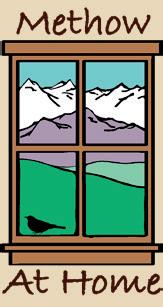
W e l c o m e H o m e
Health & Wellness 2022-2023 9 W e s u p p o r t m e m b e r s w h o w a n t t o a g e i n p l a c e t h r o u g h • Member Services • Social Engagement • Preparedness • Education methowathome org (509) 996 5844 manager@methowathome org B e c o m e a m e m b e r , v o l u n t e e r o r b o t h . W e w o u l d l o v e t o h a v e y o u j o i n u s ! Adult Family Homes Winthrop, WA Contact us to learn about payment options including Medicaid Jamie s Place is a real home in the heart of our community, serving people who need long term care The beauty of the Methow Valley continues to inspire us as we age, and we all deserve to live close to family and friends, throughout our entire lives t o u r s a v a i l a b l e N O W A C C E P T I N G A P P L I C A T I O N S jamiesplacehomes.org (509) 996 5964 24/7 Licensed & Awake Caregivers Weekly Activities Beautiful Garden Private Rooms
. J a m i e ’ s P l a c e
the Public School Funding Alliance (PSFA), the district began to ramp up its mental health support services in all three of its school buildings: Methow Valley Elementary, Liberty Bell Junior/Senior High School, and the Independent Learning Center.
“Whether it’s educators, public health officials, mental health specialists or school counselors, all are reporting the same observations,” Venable said. “The issues that our teens are faced with are not new.”
Paying attention
While the pandemic amplified the issues, Venable said, it also made it apparent to everyone that schools can’t just focus on students’ academic and physical well-being; they must pay attention to the mental health care needs of teens.

“Increased rates of teen suicide, depression, anxiety and other behaviors we’ve witnessed within the school setting echo what parents have reported experiencing at home,” Venable said. “The school

R o o m O n e
district has made teen mental health a priority and that is reflected in part by the sizeable investment we are making to expand our family and support services team.”
The expansion includes a new district-wide Health & Wellness Coordinator, Annelisa Tornberg, whom many students will recognize as the eternally cheerful and seemingly tireless former COVID liaison for the district.
Tornberg, an RN with more than 15 years of experience in public health and maternal child nursing, will work in support of students, families and staff, promoting physical and social-emotional health and well-being, Venable said, noting that Tornberg’s role will adapt to the “ever-changing needs within the student, family and staff populations.”
At the elementary school, which serves about 350 students, school counseling services have been expanded by 25%, with new school counselor Keri Moore available five days each week. Moore, who has had a close working relationship with the school district for many years as a social worker with Room One, will provide support services in grades K-5.
Resources Community resources
• Room One, Methow Valley’s one-stop social services center. (509) 997-2050; www.roomone.org.

• Okanogan Behavioral HealthCare, 24-hour crisis line: 1-866-826-6191 or (509) 826-6191.
Other resources
• Only7seconds.com.
• National Crisis Phone Line: 1-800-273-8255.
• National Crisis Text Line: Text the word “HOME’ to 741741.
• Teen Crisis Line: 1-310-855-4673.
• Teen Crisis Text Line: Text the word “TEEN” to 839863.
• LGBTQ Trevor Lifeline: 1-866-488-7386.
• LGBTQ Trevor Text Line: Text the word “START” to 678678.


Our prevention education and support groups cover healthy relationships, leadership development, sexual health, early childhood parenting, sexual assault, and domestic
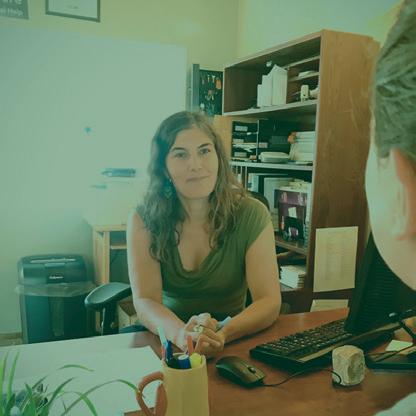
stories of those
impacted to reduce
to resources
Grades K-3 will receive further support through a social-emotional learning curriculum that the school is piloting this year. Implemented by staff, the program will be evaluated at the end of the year to determine if the school wants to adopt it longer term.
applicants are not — at least not yet, said Venable. The school district is actively recruiting for the position, but “it’s a real challenge,” Venable said, noting that districts all over the state and country are looking at the feasibility of providing similar services, but are finding it difficult to identify qualified individuals to fill the positions.
are
of many coalitions that
awareness to social issues
campaigns, policy
Advocates work with
wide variety of needs like mental and physical health
insurance
assistance, substance use
supports
items, hygiene
At Liberty Bell, the school district has partnered with PSFA to expand its mental health counseling services. The district has partnered in the past with OBHC to provide an on-site mental health counselor, a position that is currently filled by Amy Jones, who is on a leave of absence. Former OBHC school-based mental health counselor Sean Fitzpatrick said last year that the demand for his services was four times his capacity.
“That made it clear to us that there was a growing need,” Venable said. “So through PSFA we secured support to fund an additional full-time, onsite mental health counselor.”
Finding counselors
The funding is there, but the
“The feedback I’m hearing is that mental health counselors are all burned out,” Venable said. “They’re exhausted. The pandemic took its toll on them.”
Venable also noted that the Methow Valley housing crisis is hampering the district’s recruitment efforts toward its overall goal of having two qualified mental health professionals serving the district’s nearly 700 students.
Liberty Bell school counselor Erika Spellman pointed out that OBHC currently has seven open positions for school-based mental health counselors. Venable said that the MVSD’s preference would be to find a qualified counselor willing to work full-time, but in the meantime the district is looking into other ways to provide the counseling services, such as telehealth. “It
Methow Valley News10
Room One is a multi faceted social service organization providing a range of supports including direct services, prevention education and support groups, and advocacy for social change. D I R E C T S E R V I C E S A D V O C A C Y
P R E V E N T I O N We amplify the
most
barriers
We
part
bring
through
change and programs 315 Lincoln Street, Twisp, WA 98856 | 509.997.2050 | roomone.org
violence Our
you to address a
navigation (including
enrollment), rental
referrals We also offer
like fresh summer produce, baby
products, emergency contraception, and pregnancy tests
doesn’t replace in-person interac

“but
‘Honeymoon phase’
Spellman said that they’re cur rently in “the honeymoon phase” at Liberty Bell — although that very well may change by the time this article goes to print.
“After the fatigue of last year, we’ve all returned refreshed. We had a good summer, people got to travel, they got to be with friends and families. Masks aren’t required, there isn’t mandatory COVID test ing. The list of students of concern is small,” she said. “But we know the level of anxiety and depression is high amongst students and at some point the honeymoon ends and we expect the list to grow, and then we will really feel that lack of resources. There’s a cycle to mental health just like there’s a cycle to the school year, and we’re in the sweet spot of both right now. But we know that the levels of anxiety and de pression were high last spring and we know they didn’t just magically go away over the summer.”
Spellman said that she and most other school counselors aren’t trained mental health counselors. But in the absence of other onsite providers, they are often put in po sitions to play these roles, or at the very least be advocates for students seeking support. “But I can help them only so far,” she said, refer ring to both her expertise and time.
So Spellman and other local school administrators are getting creative. “We’re talking about mental health issues a lot in school,” she said, “and one thing I’ve noticed is how comfortable this generation is talking about their
issues. There used to be this stigma about seeking mental health sup port, but now you hear kids talking to each other saying things like ‘My therapist said, …’ and that stigma is just not there. It’s a really positive trend.”
Another positive aspect about

students’ openness is that it makes it easier for their peers to come for ward if they are struggling. “I really see these kids advocating for one another, looking out for each other’s state of mind,” Spellman said. “If they hear that a friend is struggling, they might feel comfortable sharing
their own mental health concerns.”
Spellman also said that students are more savvy about mental health issues, as well as wistfully opti mistic. She shared a story about a seventh-grade advisory class that role-played a scenario about how to cure anxiety. “They tried bio feedback, it didn’t work. They tried pseudo-therapy, it didn’t work. They tried exercise therapy, it didn’t work. But they invented a therapy machine and it worked,” Spellman said.
Even though the solution was im plausible, Spellman said, two things about the role-play were notewor thy: first, the students’ familiarity with different forms of therapy, and second, their willingness to discuss the things that make therapy neces sary in the first place.
“These kids have grown a lot in their sense of awareness of what’s going on around them,” Spellman said. “The things that weigh heavy on parents weigh on kids as well. They’re concerned about econom ics, about climate change, about the state of the world.”
Social media effects
But Spellman also assigns some responsibility to social media, which she — like others — believes “plays a huge role in loneliness.” Spellman addressed the “pressure of trying to be something” and the “heightened sense of awareness” of others’ seemingly idyllic lives in relation to the anxiety many students feel.
The public school, of course, doesn’t — and shouldn’t — bear the full weight of teen mental health struggles. Families, churches and social circles all play a role in watching out for kids’ emotional needs. But many families can’t

Health & Wellness 2022-2023 11 Postpartum Care Packages - include prenatal consult, postpartum home visits, unlimited text support Medela Breast Pump & Baby Scale Rentals Private Lactation Consults www.CascadeCare.com
tion,” Venable said,
it would be better than nothing.”
afford private therapy, demand for private services often exceeds local counseling capacity, and many teens don’t necessarily feel comfortable sharing the state of their emotional health with people they are close to.
The public school system, where the bulk of the Methow Valley’s teens spend the bulk of their weekdays, is therefore well-situated to notice when kids are struggling and to do something about it.
In addition to addressing mental health issues in advisory groups,





Liberty Bell is again using the Only 7 Seconds curriculum to try to mitigate loneliness and isolation. The “everybody belongs” message may seem over-simplified, but connection is truly the antidote to loneliness, and communities can play a role in giving teens a meaningful sense of their own significance.
In the wake of teen suicides in Okanogan County in the past two years, the Only 7 Seconds curriculum has been adopted both officially and unofficially by many area schools and parent communities,


providing a common framework and language for kids, parents, school staff and community members to address the issues that lead to suicide.
Spellman said that she and other school staff are committed to each student having a trusted adult they can talk to. “It takes a village and our village is the wider school staff — not just counselors and teachers, but bus drivers, cooks, paraprofessionals, coaches and custodians,” she said. “We want every student to have one adult that they feel like they can talk to and not be judged.” Spellman encourages parents to ask students if they have identified their own trusted adult associated with the school.
Local mental health counselors agree. “Teens should talk to a trusted adult,” said one. “If they don’t have someone like that they can go to Room One and talk to one of the compassionate and skilled folks there.”
Other issues


In addition to feelings of anxiety, isolation and depression, local mental health professionals say they are seeing teens struggle with family and friend relationships, drug and alcohol abuse, and suicidal thoughts. Worldwide, suicide is the fourth-leading cause of death among 15-19 year-olds, the World Health Organization reports, and dozens of students at Liberty Bell knew at least one of the teens in Okanogan County who died by suicide in the past two years. And for LGBTQ+ youth, the rate of poor mental health and suicide ideation and attempts is even higher, a 2022 CDC report shows.
Local school administrators are doing as much as they can to
address teen mental health issues, beyond expanding mental health counseling capacity, Venable said.
“We’ve named a Dean of Students for each school — retired principal Bob Winters at the elementary school and Activities Director Michael Wilbur at LBHS — and we’ve added several new staff members to decrease class size, which gives students a higher level of access to a caring adult. We’ve expanded afterschool clubs and activities offerings, giving students more opportunities to engage and connect with other students.”
“I can’t overstate the importance of the school district being able to fill the open mental health counselor position,” Venable said, “but we are also trying to offer as many other supports and services as we can. Many parts make up the whole.”
Ultimately, Venable said, the more people who “love and care for youth” who are willing to get involved with the school, the better. This isn’t just wishful thinking; it’s a strategy backed up by data.
“Our research shows that surrounding youth with the proper support can reverse these trends and help our youth now and in the future,” said CDC Acting Principal Deputy Director Debra Houry, M.D., M.P.H. School connectedness — “a sense of being cared for, supported and belonging at school” — is critical to “addressing youth adversities,” said Kathleen A. Ethier, PhD, Director of CDC’s Division of Adolescent and School Health.
“Students need our support now more than ever, whether by making sure that their schools are inclusive and safe or by providing opportuni-
Methow Valley News12
Providing emergency care in the Methow since 1968 AERO METHOW RESCUE SERVICE Emergency dial911 509 997 4013
The state of mental health in the U.S.

More and more Americans are experiencing mental health illnesses, a study by Mental Health America says.
It’s important to note that even though the study is dated 2022, the datasets analyzed are from 2019 — before the effects of the COVID-19 pandemic.
“Our report illuminates the continuing crisis both in the prevalence of mental health conditions and in access to mental health services,” Schroeder Stribling, president and CEO of Mental Health America said. “It is clear that we must do more to ensure that Americans are able to lead mentally healthy lives.”
The organization’s 2022 State of Mental Health study found that nearly 50 million Americans experienced a mental illness in 2019, and more than half of those people went untreated. That’s a number that has increased every year since 2011, the group said.
Both adults and youth in the U.S. lack adequate insurance coverage for mental health, Mental Health America said.

Suicidal ideation — where someone actively imagines and may even plan committing suicide — is also increasing among adults and has every year since 2011. Nearly 5% of American adults reported having serious thoughts of suicide in 2019. Substance use is also on the rise. Nearly 10% of U.S. adults had a substance abuse disorder in the past year, the survey found.



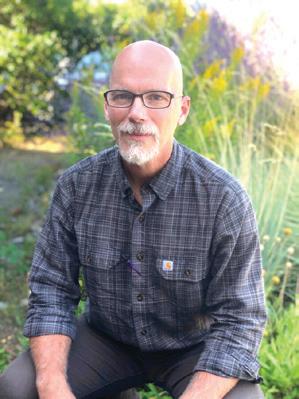
Among youth, more children are reporting major depression than in previous years. The study found that 15% of youth experienced a major depressive episode in the past year, a 1% increase from 2021. Multiracial youth are at the greatest risk for severe depression, the study showed, with one in every seven multiracial youth reporting severe depression.
A more startling statistic is that fewer than one in three children with severe depression receive consistent mental health care and
substance abuse among them is on the rise, including alcohol usage.
While that study’s data was from 2019, the organization also
conducted screenings during the pandemic that suggested the COVID-19 pandemic didn’t improve Americans’ mental health.

“We are in the midst of a twin pandemic in 2022, we are battling both the public health crisis introduced by COVID-19 and a mental health crisis,” Stribling said. “If we ignore the mental health crisis happening, it will linger for decades to come.”
Those screenings found that nearly two-thirds of people screened for depression in 2020 had severe or moderately severe symptoms. Of those who scored severe depression, 70% had never been diagnosed with a mental health condition.
“We are witnessing a historic increase in various mental health conditions,” said Deborah Dunsire, president and CEO of pharmaceutical company Lundbeck, who partnered with MHA in creating the COVID-19 screenings and dashboard. “Companies, governments, academia and society need to act together to find solutions for this global mental health crisis.”

Health & Wellness 2022-2023 13
www winthroppt com @ WinthropptFit
Jeff
Powney PT, CYT Tedra Acheson PTA
Jenna
Kokes PT, DPT, OCS Mitch Luce PT, DPT, CSCS, OCS Tim Newton PT, MPT, ATC Get your active lifestyle back Restore Function, eliminate pain, achieve your goals! Call to schedule an appt today! (509) 996-8234 202 White Ave, Winthrop, WA 98862
Finding reproductive care post-Roe
Protections for abortion in state remain strong
BY MARCY STAMPER
Fifty-two years ago, Washington became the first state in the country to enact the right to an abortion through a vote of the people. Voters ratified the right by a vote of 56.5% to 43.5%, making Washington one of just a few states where abortion was legal.
That was three years before the U.S. Supreme Court affirmed a Constitutional right to an abor tion in the 1973 Roe v. Wade decision.
The right for people to make their own deci sions about whether and when to have a child is still guaranteed in Washington, even though the Supreme Court overturned Roe this June, which allowed individual states to enact their own laws regarding abortion.
In fact, since that first vote in 1970, Washing ton voters and legislators have strengthened the
right to terminate a pregnancy two more times.
In 1991, Washington voters narrowly passed a ballot initiative that guarantees every individ ual’s fundamental right to privacy in making reproductive decisions, including the right to choose or refuse abortion and contraception.

The law requires insurance coverage and pay ment for abortion to be equal to coverage for ma ternity care, which means abortion is covered by private insurance and Medicaid in Washington.
The law guarantees the right for health care providers to use medical judgment regarding the health of the pregnant person. It also protects providers who object to performing abortions
Methow Valley News14
Photos by Marcy Stamper
Activists rallied in Okanogan this year in support of reproductive rights and the ability to make personal decisions.
from discrimination.
This year, before the Supreme Court decision, the state Legislature updated abortion protections again. “It is the public policy of the state of Washington to continue to protect and advance equal rights to access abortion care that meets each individual’s needs, regardless of gender or gender identity, race, ethnicity, income level, or place of residence,” the law says.
Less than a week after the Supreme Court overturned Roe, Washington Gov. Jay Inslee issued a directive underscoring Washington’s commitment to “remain a sanctuary for any person seeking abortion care and services in our state.”
Inslee’s directive prevents Washington law enforcement agencies from cooperating with any out-of-state investigation, prosecution or other legal action based on another state’s law that is inconsistent with Washington’s protections of the right to choose abortion and provide abortion-related care.


Local reproductive care







For people in the Methow Valley seeking abortion and related reproductive care, the closest services are in Wenatchee, at one of 11 health centers operated by Planned Parenthood of Greater Washington and



Northern Idaho (PPGWNI).
“People in rural areas are often forgotten. It’s important to meet them fully where they are. This work matters,” PPGWNI Vice President of Public Affairs Paul Dillon said.
People who are up to 10 to 12 weeks pregnant can obtain a medication abortion in Wenatchee (the abortion pill known as Plan C). Surgical abortions are available only at their clinics in Spokane, Yakima and Kennewick.
Medication abortion accounts for 60% to 70% of the abortions at their clinics. Plan C can be prescribed after an in-person or phone consultation. Many people like to take the pills at home and then come in for a follow-up appointment, Dillon said.
The Wenatchee clinic also provides health screenings, men’s health care including vasectomies, pregnancy testing, contraception and emergency contraception (also called Plan B, which prevents fertilization within the first 48 to 72 hours after unprotected intercourse), and gender-affirming care. When someone is pregnant, PPGWNI staff discuss all options with the patient and provide referrals for prenatal care, adoption or abortion. Sixty percent of PPGWNI’s patients are already parents, Dillon said.
PPGWNI also has a mobile clinic that travels throughout the region, including in

Health & Wellness 2022-2023 15
Behind on bills? We’re here to help. For support with housing costs —rent, utilities and more — contact us today. Because everyone needs a helping hand every once in a while. Call (509) 422-4041 or visit occac.com today. 5threerivershospital.net 07 Hospital Way, Brewster 24-Hour Emergency Room Family Practice & Specialty Clinic Radiology: X Ray, CT, Ultrasound, MRI, 3D Mammograms, & Echocardiograms Surgical Services: General, Orthopedic, & Gynecological Acute Care w/ Transitional Care On Call Laboratory Outpatient Physical Therapy Reproductive rights are still guaranteed in Washington.
History of abortion rights in Washington
Abortion was not always illegal in the United States, but by the early 1900s every state had criminalized it. In Washington, it became a crime to end a pregnancy except to save the life of the mother, according to a history of the state’s 1970 referendum by the Seattle Civil Rights & Labor History Project at the University of Washington.
By the 1960s, a limited number of “therapeutic” abortions were allowed in Washington, as long as a committee of physicians said it was medically necessary.
The campaign for the 1970 legislation that legalized abortion grew in part out of a recognition that wealthier women could obtain
Okanogan County, to provide free screenings and primary care for migrant farmworkers and in tribal communities. A different branch of Planned Parenthood operates clinics in Idaho.

Swamped with patients
The PPGWNI clinics were already busy. But since the Supreme Court
this special permission, while those with fewer resources were usually left to find illegal and dangerous procedures. Activists began working for abortion-rights legislation after two young women died from botched illegal abortions in the late 1960s, according to the civil rights project history.
The Washington Legislature passed the 1970 law, 25 to 23 in the Senate and 64 to 31 in the House, and submitted it to voters for ratification and adoption in a referendum, where it passed by a 13% margin.




In addition to being the nation’s first, Washington’s 1970 referendum was noteworthy for the diversity of its supporters. The Legislative
overturned Roe v. Wade in June and many states banned all or most abortions, they’ve seen a dramatic increase in demand and are caring for women from across the country, Dillon said.
In fact, as soon as the Roe decision came out, Planned Parenthood got a call from someone in Utah, Dillon said. “We’re already seeing calls from states enacting bans.
effort had bipartisan support and campaign backers included women, men and a group of clergy. The bill’s main sponsor was state Sen. Joel Pritchard, a Republican from Seattle, while Rep. Margaret Hurley, a Spokane Democrat, headed up the opposition. Republican Gov. Dan Evans signed the bill, sending it to the voters for ratification.
There were significant regional differences on the referendum. Almost all eastern Washington counties, including Okanogan, voted against it. The civil rights project believes the campaign was successful because they framed “abortion as a health care issue instead of solely an issue of women’s choice.”
People need to get care and have no place else to go,” he said. In the first week of September, PPGWNI saw two patients who’d come all the way from Florida.
Idaho’s recent passage of two laws that ban almost all abortions, which went into effect in late August, drove patients to Washington almost immediately, Dillon said.
The Idaho bans were challenged by the United States Department of Justice and a group of 21 state attorneys general, including Washington Attorney General Bob Ferguson. They argued that Idaho’s near-total ban on abortion fails to protect the rights of patients to access emergency medical care, which is guaranteed by the federal Emergency Medical Treatment and
luxury at the edge of the wilderness
The Spa at Sun Mountain has what you need to relax and recharge. Take a day for yourself or book a weekend getaway to treat yourself to that break you deserve




Methow Valley News16
Visit our website
Labor Act.
“We are already seeing a signif icant influx of Idahoans seeking abortion services in Washington, and that will only increase with this new, restrictive law,” Fergu son said. “What happens in Idaho directly impacts Washington. Not only is Idaho’s near-total ban on abortion wrong, it violates federal law.”
“Federal law is clear: patients have the right to stabilizing hospital emergency room care no matter where they live,” U.S. Department of Health and Human Services Sec retary Xavier Becerra said. “Women should not have to be near death to get care.”
Ferguson argued that Washing ton’s health care system will be strained by an influx of patients traveling to Washington for health care now prohibited in Idaho.
A U.S. 9th circuit court judge in Idaho ruled that health care provid ers in Idaho must treat pregnant pa tients whose life may be at risk. But the judge allowed the other parts of the ban to go into effect while the case is pending.
Before the Supreme Court over turned Roe, one-quarter of people seeking abortion care in Washing ton were from out of state. In 2021, 43% of patients getting abortion care in Pullman were from Idaho. With bans taking effect across the country, Washington’s clinics and providers are expecting a 385% in crease in people seeking care. They have been hiring staff to handle the increase, Dillon said.
“If a patient is just trying to see a provider, now politicians are trying to get between you and your medical provider. It creates such a burden on this critical care. This is a national health care crisis,” Dillon said.
People traveling from other states are more likely to be further along in their pregnancies because of the time it takes to get an appointment, arrange travel, and find a way to pay for it. That means they’re more likely to need a surgical abortion, Dillon said.
PPGWNI now has a patient nav igator to assist with expenses for travel, lodging or the procedure, Dillon said. Their “hospitality fund” is primarily donor driven, but they’re also applying for grants to meet the increased need, he said.
“The big thing is that, as dark and scary as these times can be, we’re not giving up or going anywhere. The majority of eastern and central Washington support us. We’re real ly grateful to be here in the commu nity,” Dillon said.
Other local resources
There are other local resources for reproductive care and for pregnant people seeking referrals.
Since its founding in 1998, Room One, the social services agency in Twisp, has been committed to work ing against intergenerational pov erty and violence, which they see as linked to the ability to make de cisions about whether and when to have a child. “Unwanted pregnan cies impact a woman’s educational attainment and income-earning capacity, and increase vulnerability to violence,” Room One said in its summer 2022 newsletter.
Room One provides free condoms, pregnancy tests, and emergency contraception (Plan B). Their advo cates help people with unwanted pregnancies find prenatal care or abortion care and with adoption referrals.
Room One also provides edu cation in schools about healthy relationships, birth control, and the importance of consent, which they have found leads to postpone ment of sexual activity and in creased use of contraception. They work with local clinics to ensure teen-friendly, safe and affordable reproductive health care services are available.
“There are few issues we face in our country that cause such impassioned disagreements as the issue of access to abortion services.
Abortion is a deeply personal issue, and it is normal to have strong feel ings on all sides,” Room One said.
“It is our steadfast commitment to share information, offer support, ask guiding questions, and walk alongside each community member without judgment.”
Young people can also get assis tance and referrals for reproductive care, pregnancy tests, abortion care, prenatal care or adoption resources from advocates with the Foundation for Youth Resiliency & Engagement (FYRE) in Omak.
Care Net Pregnancy Center pro vides pregnancy tests, ultrasounds,
counseling and referrals for prenatal care, maternity and infant supplies, parenting resources and adoption services in Omak, Brew ster and Oroville. Care Net offers “Christ-centered support, and our life-affirming network of pregnancy centers, churches, organizations, and individuals.”
Care Net will provide information to help someone make a decision about an unplanned pregnancy. But if someone comes to Care Net look ing for a referral for an abortion, they don’t direct them anywhere,
but simply say they can’t help. Most people are familiar with the organi zation and know they don’t support abortions, Care Net Omak Branch Manager Cathy Den Adel said.
They will offer to talk or pray with the individual. “When some body walks through our door, we want to help in any way we can,” Den Adel said. Expectant or new mothers can get points for watch ing educational videos, which they can redeem for maternity and infant supplies such as diapers, formula and cribs.
Home Birth Midwifery Care
for Your Growing Family in North Central Washington
Serving the Methow Valley, Greater Okanogan, Chelan, & Douglas Counties
Advantages of Midwifery Care:
Longer Appointments • Continuity of Care • Water Birth Available

• Comprehensive Postpartum Care
• Emphasis on Informed Choice
Why choose Wild Moon Midwifery with Christina?
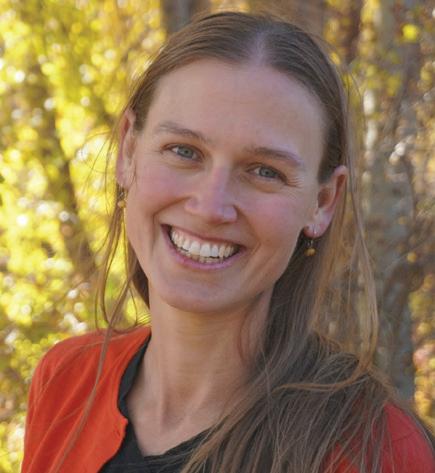
“I cannot imagine feeling better supported by a midwife than I was by Christina. What is more beautiful is that this experience has been echoed by every other mother I know who has worked with her.”
“The postpartum care we received was like nothing we’ve ever heard about. Literally amazing!”
“I have never felt more spiritually connected & in tune with my body & baby, than during what I consider a miraculous & empowering birth… Christina’s support throughout truly made it a dream experience that I am proud to share and will treasure always.”
Visit www.wildmoonmidwifery.com to learn more about Christina’s midwifery care, including pregnancy massage, postpartum pelvic floor & core restoration, perinatal movement classes, childbirth education classes, & transformational birth coaching.
wildmoonmidwifery.com

(206) 660-6459 • Twisp, WA
Covered by Medicaid + great out-of-network reimbursement for private insurance
Health & Wellness 2022-2023 17
Book
a FREE consultation to see if midwifery care is right for you.
•
Health & Wellness timely topics
Is coffee good for you?
We’ve long turned to coffee for a quick pickme-up in the morning.
Many people simply love to indulge in the vari ous flavors that are naturally present in this savory drink. Yet whether or not it was actually good for you was a topic of debate for a very long time.
Doctors are increasingly linking coffee with better outcomes against Type 2 diabetes, Parkinson’s and liver disease. Coffee may also decrease the risk of depression and improve our cognitive functions, according to studies cited by the Mayo Clinic. It wasn’t always this way. In fact, coffee has long been blamed for a range of health issues, from causing cancer to stunt- ing our growth. But earlier studies didn’t tend to
factor in other known high-risk behaviors among coffee drinkers of that era, including lack of physical activity and smoking. Newer research now shows a connection between consumption of coffee and decreased mortality rates.
Coffee isn’t entirely risk free, but impacts are usually related to other health issues. For in stance, drinking two cups or more of coffee each day may increase heart disease risks for those with a genetic mutation that slows the process ing of caffeine. Some elevation in cho- lesterol levels has been linked to very high consumption of unfiltered coffees like espresso. Then there are the risks associated with the things so many people add to their coffee. Milk, sugar and flavorings contain excess calories, unhealthy ingredients and other additives that can increase
Taking care of your feet
The average American has already walked an astounding 75,000 miles by the time they reach 50, according to a study by the American Podiatric Medical Association (APMA).

If you’d put that kind of distance on your car tires, it would be past time for a replacement. But we only have one pair of feet, so that means taking better care of them.
Regular care can help lead to early detection and treatment of foot and ankle issues. In the meantime, you’ll also learn more about how to avoid pain and inju ry. The most common issues are sprains, fractures and strains. But each foot actually has more than
The importance of sleep
Being chronically tired can lead to serious health consequences.
The busiest people might decide to shave off some sleep hours in order to fit in a few more re sponsibilities each day. Some of us simply have trouble turning off our brains. Others may have a physical problem that prevents them from falling or staying asleep. But the health risks involved with not getting enough rest are very serious.
Sleep plays an important role in metabo lism, immunity, memory and other vital brain functions. Those who sleep more are obviously better able to focus. But new studies suggest that getting a good night’s rest is directly related to learning. Restorative, deep sleep cycles allow our brains to process new information, and to
negative health outcomes.
Some may need to limit their intake of coffee, including women who are breast-feeding or pregnant, children and those with certain health conditions. But enjoying coffee in moderation, meaning three to four cups a day, is considered generally safe among adults. It’s what we often add that lessens its positive health impacts. Avoid flavored syrups, which are usually very high in sugars, as well as whipped cream.
Order smaller sizes rather than your typical “grande,” in particular if you plan to pair your drinks with cream or other sugary options. The Centers for Disease Control and Prevention also recommend fat-free or low-fat milk options. But plain, so-called “black” coffee is your healthiest option.
30 joints that can be impacted by arthritis, a particularly painful situation since we’re on our feet all day. Sprains are soft tissue injuries that may occur during everyday activity, while fractures involve a broken bone. People who do a lot of walking, standing or running as part of their work or leisure time are susceptible to both sudden injury and gradual conditions that include arthritis. These situations often simply require rest, but may also lead to surgery.
The APMA reports that half of all U.S. citizens report foot pain at some point. There are more than 50,000 work-related foot inju ries a year, according to the U.S. Bureau of Labor Statistics. Many might assume that the bulk of these mishaps involve more senior Americans. But the mean age for
consolidate it so that these details can more eas ily be retrieved later. Not getting enough sleep can also lead us to rely too much on caffeine, and that can have its own negative impacts if used to high doses.
Despite huge advances in the technology of sleep in the form of adjustable mattresses and memory pillows, a good night’s sleep can remain frustratingly elusive. Work and family concerns can couple with a constantly changing world of information sharing to create what feels like a never-ending buzz. How much sleep you need varies based on age, from 14-17 hours a day for newborns to 7-8 hours for average older adults. The basic rule of thumb, however, is that your body will tell you when you’re not getting enough.
those who’ve been injured is actu ally just over 34. More than 80% of these injuries happen to men. One of the faster-growing issues is plantar fasciitis, an inflammation in the arch of the foot suffered by nearly 2 million patients a year.
Stretch and exercise your toes and feet throughout the day to avoid muscle cramps. Moisturize your feet to help with cracked, dry and irritat- ed skin.
If you sit too long, raise your legs or stand up to lessen related swell ing in the feet. It’s also crucial to wear the right kind of shoes for the activity you’re taking part in. Custom-fit or pre-packaged shoe inserts can provide aid and relief for those with plantar fasciitis, since they support your arches. They’re less effective for other foot issues, according to the APMA.
Maximize your opportunity for sleep by maintaining a consistent bedtime and waking hour, even on weekends. The National Sleep Foundation also recommends avoiding late-af ternoon naps — and not napping for more than 20 minutes. Stay away from caffeine late in the day, as well as alcohol.
Daily physical activity is good for your health, and for getting more sleep. Turn off all screens — yes, including the phone — at least an hour before you’re ready to lie down. They tend to artificially awaken us. If you’re still struggling with sleep issues, consider the environment around you. Is there too much light? Too much noise? Design a room that’s sleep friendly. If you continue to feel sleep deprived, reach out to your doctor.
Methow Valley News18
Photo by Steve Mitchell
Directory of Advertisers
CRIME-VICTIM SERVICES
Room
Aero
EMERGENCY SERVICES
MASSAGE SERVICES
Sun Mountain
MIDWIFERY
Cascade
Wild
ENVIRONMENTAL SERVICES

Methow
Okanogan
Jason
Aging
HELLERWORK
HOME HEALTH CARE
HOSPITAL/CLINIC
Family Health
Mid-Valley
Three
INSURANCE SERVICES


Greene
VIP-Melbourn

MENTAL HEALTH/WELLNESS
Family Health
Okanogan
Room
ORTHOPEDICS/
SPORTS MEDICINE
Mid-Valley
Three Rivers
PHYSICAL THERAPY
Winthrop Physical
ROLFING
Cascade Rolfing
SENIOR HEALTH
Aging & Adult
Jamie’s
Methow
SKIN CARE TREATMENT
Sun Mountain
SOCIAL SERVICES
Okanogan
Room
Health & Wellness 2022-2023 19
One . . . . . . . . . . 10
Methow Rescue Service . . . . . . . . . . 12
Valley Citizens Council . . . . . 12
Clean Air 19
Rumohr . . . . . . . . . 11
& Adult Care . . . . . 20
Center . . . . 20
Hospital . . . . . 5
Rivers Hospital . . . 15
Insurance Services . 5 Smithson Insurance Services . . . . . . . . . 20
Insurance . . 19
Centers . . . 20
Behavioral HealthCare . . . . . . . . 2
One . . . . . . . . . . 10
Lodge 16
Care . . . . . . . . . 11
Moon Midwifery . . . 17
Hospital . . . . . 5
Hospital . . . 15
Therapy 13
. . . . . . . 4
Care . . . . . 20
Place . . . . . . . . . 9
At Home 9
Lodge . . . . 16
County Community Action Council. . . . . . 15
One . . . . . . . . . . 10








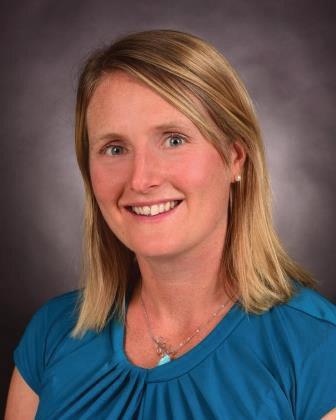

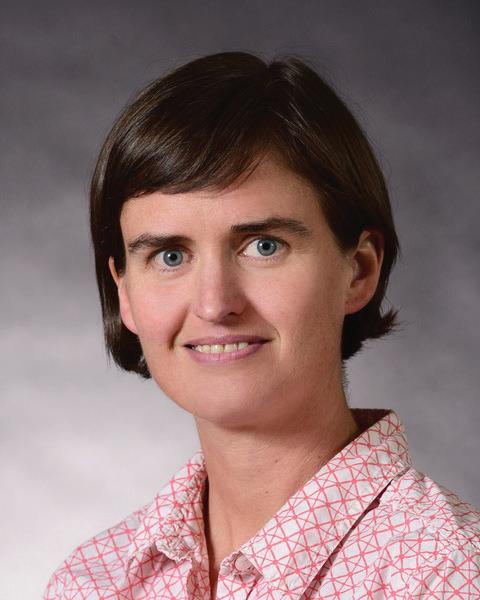














Methow Valley News20 They can assist you with answers to your questions about: Individual Health, Employee Benefit Plans, Dental, Vision, Life, Long Term Care, Disability and ALL Medicare Planning. Family caregivers are all around us. They care for friends, relatives, and neighbors and never ask for anything in return. But sometimes the “helpers” need a little help too. Aging & Adult Care offers programs providing respite, housekeeping, personal care, shopping and more! Keep helping them with a little help from us! Serving Adams, Chelan, Douglas, Grant, Lincoln and Okanogan Counties (509)826-7452 aaccw.org 739 Haussler Rd, Suite B Omak, WA 98841 Are you helping an adult who needs care?





























































































































